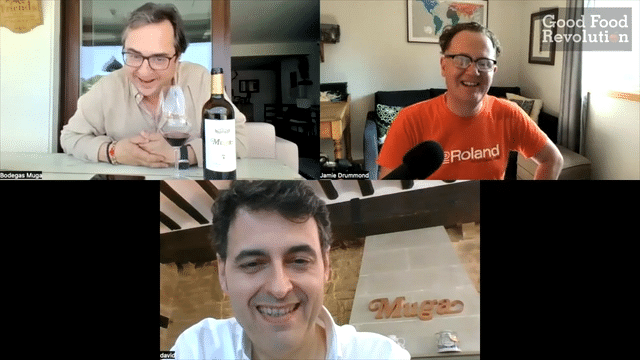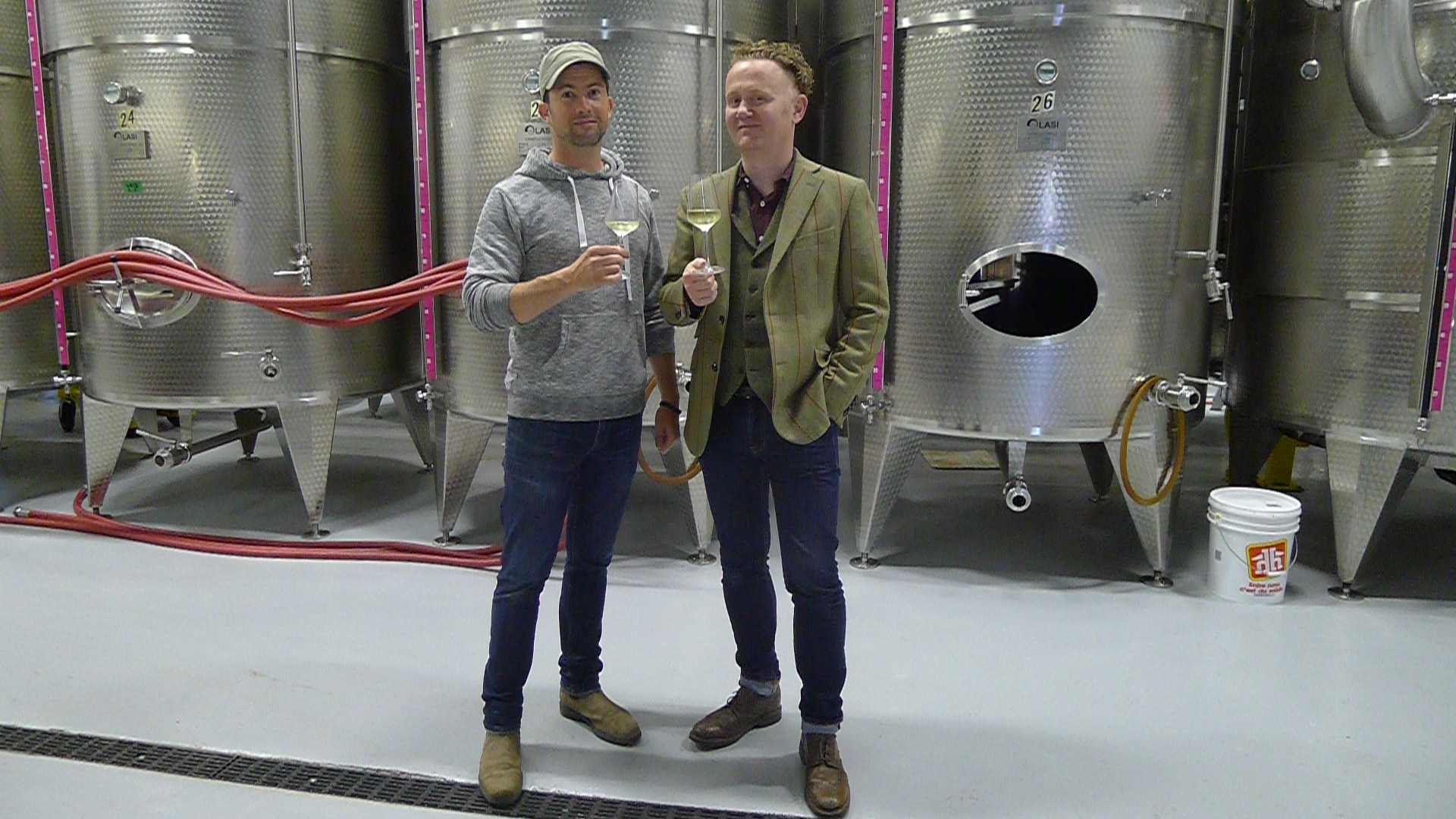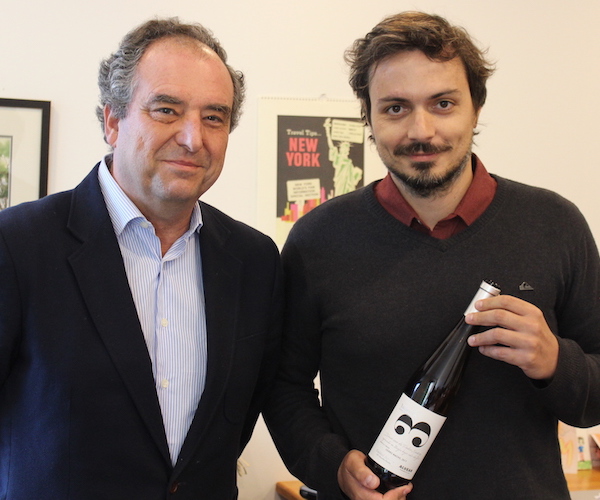Malcolm Jolley meets a young winemaker from Châteauneuf-du-Pape.
 On a sunny Thursday morning at 10:02 I received a short text from Jamie Drummond: “Can you do a Châteauneuf lunch with Mark Coster today?” I turns out he was suffering some kind of affliction and was texting from his sickbed. He didn’t wish to cancel and leave Mark from Noble Estates with an empty seat at the table, nor deny a visiting winemaker an interview, so he asked if I would go in his stead.
On a sunny Thursday morning at 10:02 I received a short text from Jamie Drummond: “Can you do a Châteauneuf lunch with Mark Coster today?” I turns out he was suffering some kind of affliction and was texting from his sickbed. He didn’t wish to cancel and leave Mark from Noble Estates with an empty seat at the table, nor deny a visiting winemaker an interview, so he asked if I would go in his stead.
“Sure,” I texted back. As with Champagne, one doesn’t say no to Châteauneuf, and since my lunch plans were eating cheese toast over my kitchen counter, I figured I had little to lose.
I try and do a little homework before meeting a wine producer, so I sent another text to Jamie asking who the producer was. I wondered if it was a well known one that Noble represents, and who Jamie and I had met previously. Jamie wasn’t sure but thought that was likely the case, he was ill and needed to get back to rest so I didn’t press him. I finished up whatever I was working on, changed into some respectable clothes and headed to Montecito restaurant for the tasting and lunch.
Mark wasn’t surprised to see me instead of Jamie at lunch (we often cover for each other), but I was surprised to see the guest of honour, winemaker Florent Lançon. His family owns and cares for the famous monopole vineyard and wine, Domaine de la Solitude. It was a good surprise, not just for the treat of tasting famous wines, but because I recognized Florent right away from a dinner I sat next to him at a couple years ago in Provence. I traveled there to visit Châteauneuf and Tavel in 2016 with a group of Canadian journalists (read about that here). The morning of this tasting, after I had texted with Jamie, I had looked up the Rhône producers listed on Noble’s website. I saw la Famille Lançon, but didn’t make the connection somehow.
It was great to see Monsieur Lançon. I remembered Florent as good company, and his family’s wines as delicious. He was in good spirits and he, Mark, a half-dozen or so of the city’s top sommeliers and sommelières, and I sat down to taste some wines and here some stories about La Solitude. Here’s what I learned.
 We tasted from red to white, in the Burgundy style, so that we could keep through with the Châteauneuf Blanc with the first course of lunch. That meant diving right into the 2015 Domaine de la Solitude Cuvée Tradition Chateauneuf-du-Pape AOC. Robert Parker, who did much to elevate Châteauneuf’s status in the hierarchy of wines, famously described the AOC’s wines as “hedonistic”. Whatever you may think of Parker (hero of democratic wine writing or villain of oenological globalization), the man can write and that note resonates, pleasantly, for me. The Cuvée Tradition was a delicious mouth wash of red fruit that melted into purple and black. Silky and viscous here was a luxurious wine, powered by Grenache, especially on yhe attacked, and backed up by Syrah, Mourvèdre, Counoise and Cinsault.
We tasted from red to white, in the Burgundy style, so that we could keep through with the Châteauneuf Blanc with the first course of lunch. That meant diving right into the 2015 Domaine de la Solitude Cuvée Tradition Chateauneuf-du-Pape AOC. Robert Parker, who did much to elevate Châteauneuf’s status in the hierarchy of wines, famously described the AOC’s wines as “hedonistic”. Whatever you may think of Parker (hero of democratic wine writing or villain of oenological globalization), the man can write and that note resonates, pleasantly, for me. The Cuvée Tradition was a delicious mouth wash of red fruit that melted into purple and black. Silky and viscous here was a luxurious wine, powered by Grenache, especially on yhe attacked, and backed up by Syrah, Mourvèdre, Counoise and Cinsault.
Florent talked about the primacy of Grenache in C-d-P. “Grenache vines need age,” he said, “maybe 20 years before they are ready.” He went onto explain that the average vine age he works with is 50, and about 1% of his vines are being replanted at any given time.
Next up was the 2013 Domaine de la Solitude Cuvée Barberini Châteauneuf-du-Pape AOC. Barberini is the name of the family, from Florence, that originally settled at La Solitude in the 16th century, and refers to a selection of special vineyard sites. Florent described them as being full of Galets roulés, the large round prehistoric river rocks that cover the ground and are distinct to the region. The 2013 Barberini is a straightforward GSM blend, and comes in as a little more elegant and floral than the 2015 Tradition, this could be in part due to vintage variation, since 2013 was a cooler year. It was full of what the English call ‘hedgerow’ fruit: a spectrum of raspberry to blackberry. To be honest, I didn’t take very detailed notes on it because I was enjoying it so much; hedonistic, indeed.
The 2013 Barberini is actually still in stock in some LCBO Vintages stores (LCBO# 525907), and at $60.75 a bottle it’s not a cheap wine, but for a kind of ‘Grand Cru’ luxury brand it holds great comparative value. Mark told us that an allotment of the 2015 Barberini has also been secured and on its way due to arrive in September. Florent explained that he did not always classify for Barberini, or his other two Châteauneuf ‘reserve’ wines: Cornelia Constanza, which is a single vineyard wine made from a lieu-dit on the legendary La Crau hill, and the Réserve Secrète, which is a blend of only Grenache and Syrah… and that’s all I know because, well, it’s a secret. Florent explained that the Lançon family feels strongly that the reputation of Domaine de la Solitude depends on the quality of the Cuvée Tradition. In a difficult year, when yields are low and there will be less wine to make and sell, he’ll sacrifice the higher, more expensive, brands for the flagship one. This is the opposite of the general practice in Bordeaux, where the first wine will be given priority over the second. With a Gallic shrug he explained it was a bad way to do business in the short term but he believed better for the reputation of Domaine de la Solitude in the long term.
The last wine we tasted was the 2016 Domaine de la Solitude Cuvée Tradition Blanc. When I was in Châteauneuf-du-Pape two years ago, we did a lot of white wine tating. Although whites make up less than 10% of C-d-P production, producers are making more of it and planting more of the 18 odd white grape varietals that it can be made with according to the rules of the AOC. Florent told us the Cuvée Tradition Blanc was driven mainly by Clairette, for freshness, and Rousanne for richness. There is also Grenache Blanc to lend fruit. This is a big creamy hedonistic wine that is redeemed by a floral nose and a line of fresh citrussy-peachy acidity. It wants a bouillabaise. Florent explained that the wine was made, in part, in new large format concrete egg tanks, that had replaced stainless steel. He was pleased with the results from these new, innovative vessels, but he wasn’t surprised. “It’s not really new,” he said, “we used to use concrete after the war, and before that stone.” La plus que ça change à le Domaine de la Solitude.







